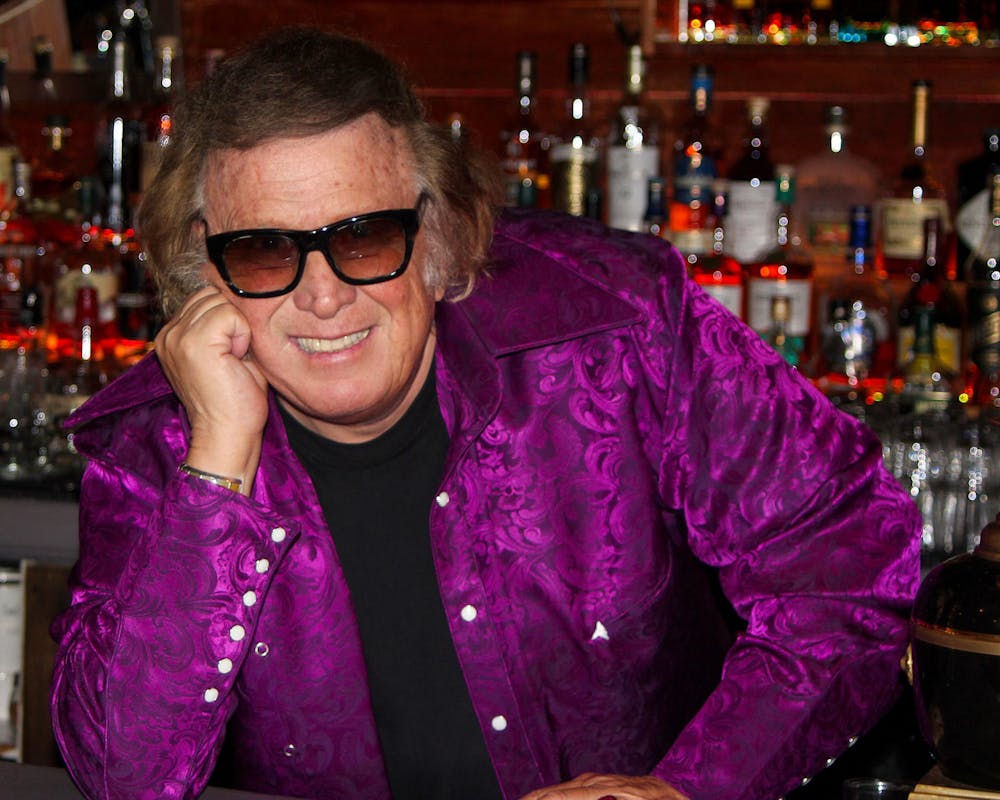“That I could make those people dance, and maybe they'd be happy for a while…”
Don McLean sang these words in his 1971 song “American Pie,” a song dedicated to the 1959 crash that killed Buddy Holly, Richie Valens and the “Big Bopper” J.P. Richardson and the subsequent cultural and political changes of the 1960s.
Since his debut album was released in 1970, McLean has sold over 50 million records according to his website, with “American Pie” being named one of the Five Greatest Songs of the 20th Century by the National Endowment for the Arts and the Recording Industry Association of America.
For over 50 years, McLean has hoped to make those people happy. Now, the man called the “American Troubadour” by his fans, will hope to make the people of Muncie happy with his music.
On Sept. 2, McLean will be performing at the new Brown Family Amphitheater at the heart of Ball State’s campus. This show was made possible by a collaboration between the City of Muncie and Ball State University.
McLean’s performance at the Brown Family Amphitheater comes as his final stop in the Midwest before he begins the Californian leg of his tour. Over the past year, McLean has toured to celebrate 50 years of “American Pie.”
McLean, a 2004 inductee in the Songwriters Hall of Fame, has a familiarity of being called upon in special circumstances; he was the first American artist to perform at the Sydney Opera House.
McLean says he “never [does] the same show twice” and likes to shake things up with every performance. He does not have a set list of songs to follow, instead choosing spontaneity during his concerts. Alongside his original songs, he also performs covers of Roy Orbison and other popular artists, creating what he likes to call his “own American Songbook.”
He credits his years of experience performing for his spontaneous nature; during concerts, there will be songs that will fit with previous songs he has performed, “subconsciously knowing that it's going to be the right thing from a programming perspective.”
McLean hopes students will come to the concert and get to see him, not only learning about him, but also about music in general. He believes that people of all ages can search for new music and are not limited to what they listen to on the radio.
“The kind of artist that I am — a pure singer-songwriter type of artist, not a video artist — they want that sometimes,” McLean said.
Getting the “American Troubadour” in Muncie
After having conversations with several community leaders and finding out that Don McLean had an opening on his tour, Dan Ridenour, mayor of Muncie, wanted to bring the “American Pie” singer/songwriter to the city. When he found out the originally planned venue for the concert, Canan Commons, was already booked with events, Ridenour believed the concert was not going to be possible.
Then, a breakthrough; he heard a new venue being built on Muncie’s college campus may be completed in time for the concert. Ridenour then had conversations with Geoffrey S. Mearns, president of Ball State University, and other university leaders.
“I was assured that it would be available,” Ridenour said. “That's when Ball State and the city decided to collaborate.”
With a location secured, planning for the concert moved forward. Ridenour added that the availability of the amphitheater gave the Muncie community “a second opportunity” for the concert, and having a second outdoor facility makes the community strong.
$45,000 of EDIT (Economic Development Income Tax) funds were used to bring McLean to Muncie. EDIT funds are collected through taxes and are to be used for opportunities to improve the economy. Ridenour said marketing expenses and other production expenses culminated in the $45,000 needed for the concert.
A community gathering place
Ridenour is excited about McLean coming to Muncie, saying “American Pie” is “one of the top ten most iconic songs of all time.”
Sharing Ridenour’s excitement is James Lowe, associate vice president for facilities planning and management at Ball State. Lowe, a 1977 graduate of Ball State, said “American Pie” would often be played on the radio when he was in college.
Even though the amphitheater has not been officially opened for use, Lowe said multiple requests have already been put into host events at the facility. He sees the amphitheater as a community gathering space where plays can be held and where students can gather and perform together.
“The students in the residence halls are going to love it,” Lowe said. “I can imagine students in Park and Noyer [Halls] looking out of their window and seeing all of these events happening.”
The addition of the Brown Family Amphitheater has the chance to improve the quality of life in Muncie, Ridenour said. He also added that the collaboration with Ball State continues the growing relationship the city has with the university.
The amphitheater includes dressing rooms and warm-up rooms behind the stage, which includes a wood feature added for improved acoustics. The wood, which came from nearby Chesterfield, was thermally modified and is decay-resistant.
The technological setup of the amphitheater allows for aspects of shows, such as the lights and audio/visual equipment, to be set up either in the technological room or out in the seating area.
Lowe said that the location of the amphitheater was in a favorable location on campus.
“It's in the right location,” Lowe said. “It's in a location where you can come out and feel comfortable.”
Lowe said the outside space brings “a little bit of Ruoff [Music Center in Noblesville] right here” to Ball State and Muncie, adding the project is another step to connecting Ball State with the Village.
“It describes the excitement that we've built out from the Village all the way up to Rec[reation] Center,” Lowe said.
Contact Grayson Joslin with comments at Grayson.joslin@bsu.edu or on X @GraysonMJoslin.





